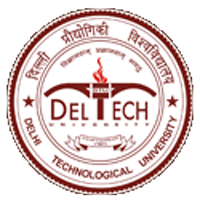Please use this identifier to cite or link to this item:
http://dspace.dtu.ac.in:8080/jspui/handle/repository/18070Full metadata record
| DC Field | Value | Language |
|---|---|---|
| dc.contributor.author | SINHA, VIKAS KUMAR | - |
| dc.date.accessioned | 2020-12-28T06:20:25Z | - |
| dc.date.available | 2020-12-28T06:20:25Z | - |
| dc.date.issued | 2020-06 | - |
| dc.identifier.uri | http://dspace.dtu.ac.in:8080/jspui/handle/repository/18070 | - |
| dc.description.abstract | Continuous monitoring of the physical environment cause advancement in sensing, communication and computing techniques which led the development of Wireless Sensor Networks (WSNs). WSN is defined as a collection of autonomous nodes distributed spatially that can communicate wirelessly. Each node consists of four main components: sensor, processor, radio, and battery. Such nodes are commonly referred to as "Sensor Nodes." A sensor is a device that interprets some of its environmental characteristics. It detects events or changes in quantity and, usually as an electrical or optical signal, provides the corresponding output. A processor is used for computing, base station receives data through radio waves for wireless communication, and sensors uses battery as the main power source. Deployment of the sensor nodes is done based on the environmental conditions of the area, solar panels harvests energy from the nature and can be used as the secondary power supply for the node. | en_US |
| dc.language.iso | en | en_US |
| dc.relation.ispartofseries | TD-4926; | - |
| dc.subject | ORTHOGONAL TEACHING LEARNING | en_US |
| dc.subject | NODE DEPLOYMENT | en_US |
| dc.subject | OTLBO | en_US |
| dc.subject | WSN | en_US |
| dc.title | ORTHOGONAL TEACHING LEARNING BASED OPTIMIZATION-"OTLBO" NODE DEPLOYMENT PROCEDURE OF WSN | en_US |
| dc.type | Thesis | en_US |
| Appears in Collections: | M.E./M.Tech. Computer Engineering | |
Files in This Item:
| File | Description | Size | Format | |
|---|---|---|---|---|
| M.Tech. VIKAS KUMAR SINHA.pdf | 4.27 MB | Adobe PDF | View/Open |
Items in DSpace are protected by copyright, with all rights reserved, unless otherwise indicated.



